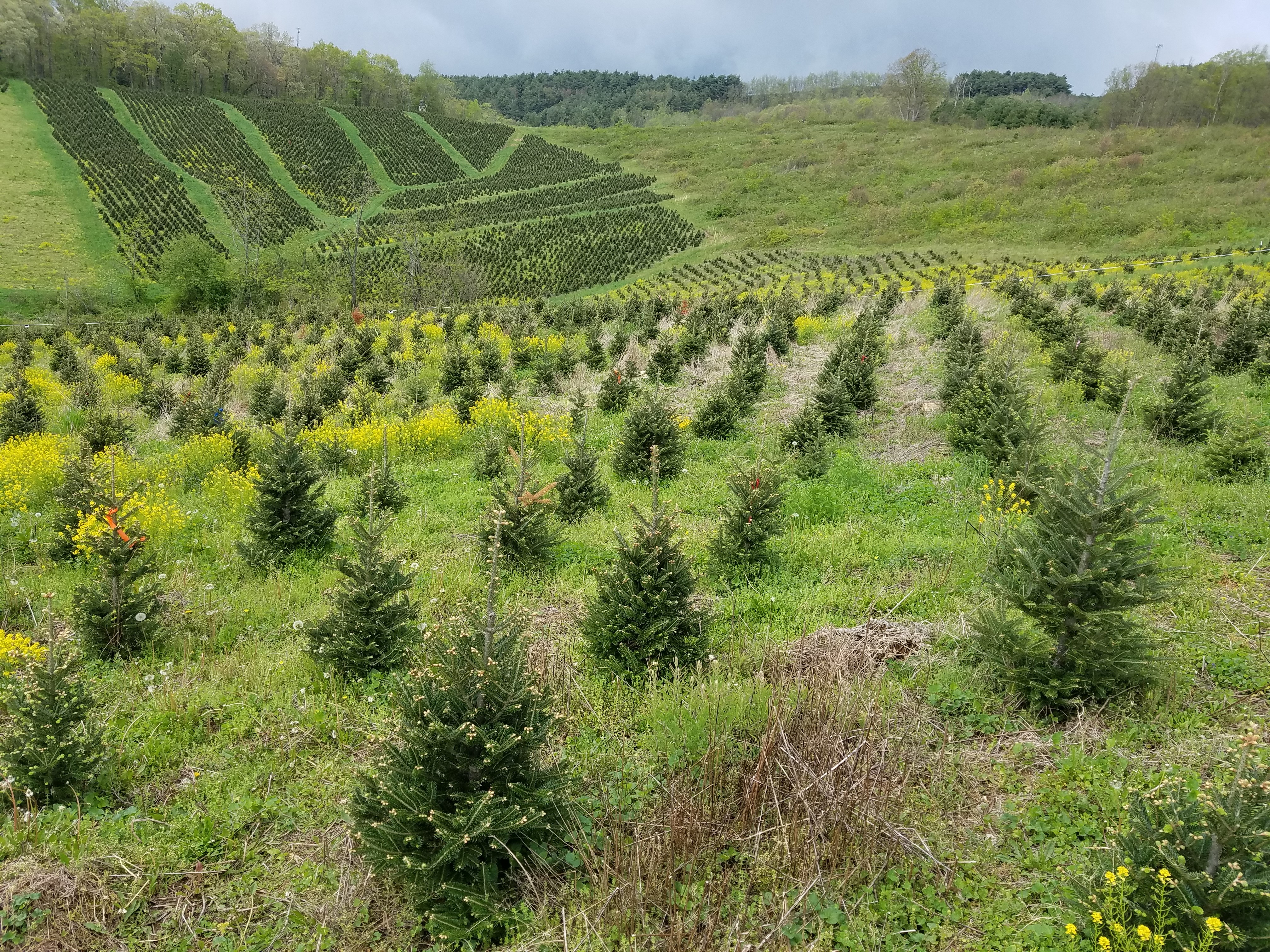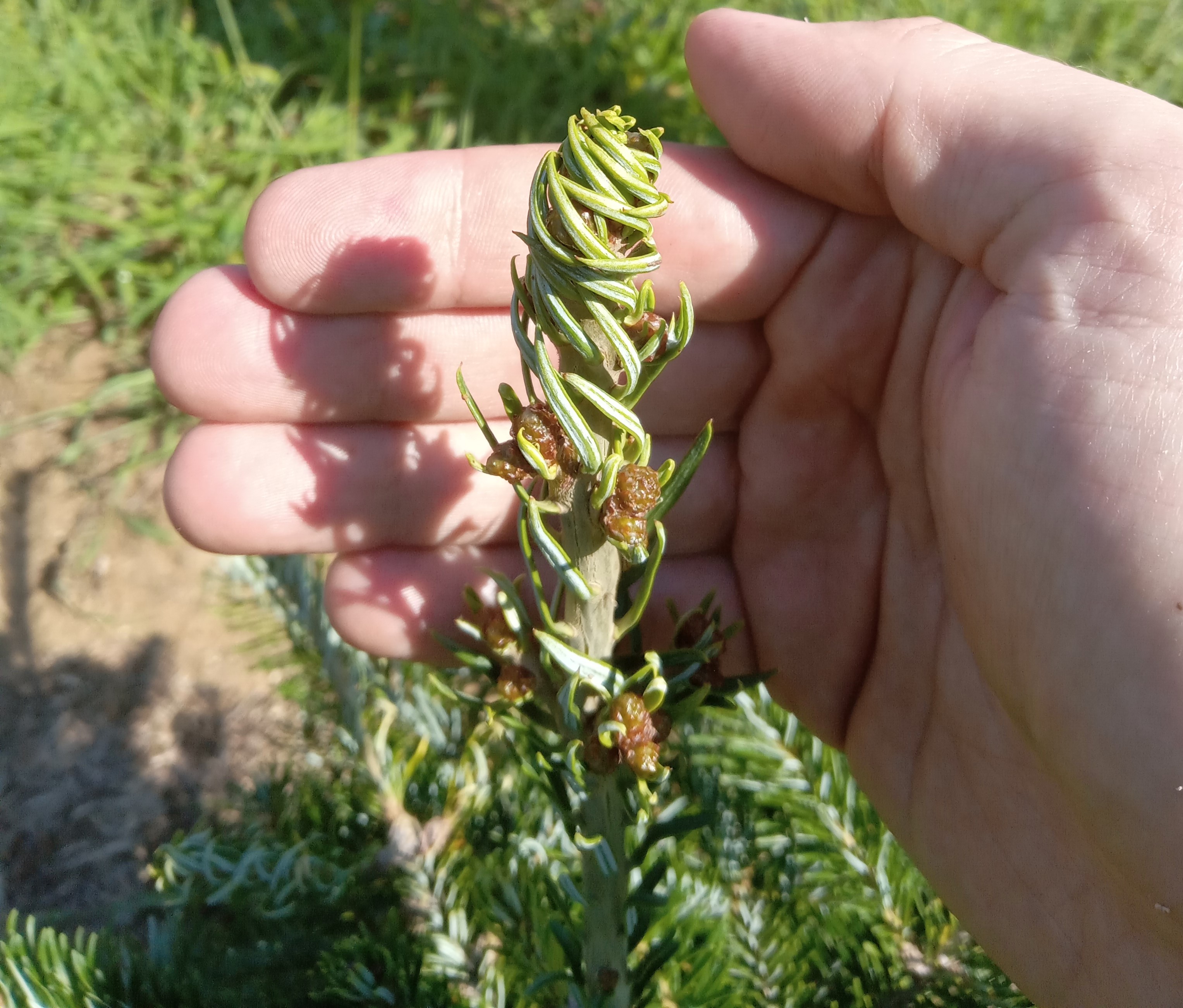Summer weed control options for Christmas tree production
Follow these four steps for effective summer weed control in Christmas tree production.

Weed control is an important aspect of successful Christmas tree production and is often a yearlong effort. Weeds can outcompete trees for water, nutrients, space and sunlight. For recent tree transplants, inadequate weed control increases tree mortality, especially during dry years. Weeds can interfere with farm practices, such as shearing and spray deposition, and noxious weeds, such as poison ivy, can be a hazard to workers. A previous article reviewed the basics of Christmas tree weed control and Weed Control in Christmas Trees, Bulletin E3237 provides an in-depth review. This article will focus on summer weed control options.
Michigan State University Extension recommends reviewing the following four steps for your summer weed management program.
- Prior weed control: What has been done in the spring or fall for weed control in the field? Were preemergent herbicides applied in the spring? If so, how effective was the application and what weeds are or are not being controlled? Keeping written records is very useful in determining what worked (or didn’t) and planning for future years.
- Level of weed control desired: In an ideal world, Christmas tree fields would be free of weeds within the row (Photo 1). However, complete removal of weeds in Christmas tree fields may not be the goal for your farm or necessary for successful tree production. In North Carolina, a common weed management philosophy is chemical mowing, in which weeds are repeatedly stunted by low doses of herbicides. Weeds remain alive (Photo 2) but are kept small and have no negative impact for tree production. This method is especially important in hilly production areas to minimize soil erosion. Consider the amount and type of weeds in your field. Depending on a host of factors (tree age, tree species, weed species) some level of weeds may have no impact on tree production.
- Weed identification: To determine weed control plans, identification of current weeds is critical. As an example, treating broadleaf weeds with a selective post emergent grass herbicide would be useless. You should also note the stage or size of weeds. Herbicides may be labeled to control specific weed species, but only during certain growth stages or sizes. The Michigan State University IPM Pocket Guide for Weed Identification in Christmas Trees can aid in weed identification with detailed weed photos and life cycle information.
- Summer weed control options: Trees (especially young trees) that are actively growing with new succulent needles are the most sensitive to chemical treatments. As growth hardens off in the late summer and early fall, trees become more tolerant of herbicides. With that in mind, a list of common post-emergent summer weed control options are listed below.

Chemical* methods
Grass specific post-emergent herbicides (Envoy, Fusillade, Segment): This class of herbicides is selective to only target grasses weeds and is very safe for trees (Photo 3). It will have no effect on broadleaf weeds. Applications can be made over the top of trees. Read specific product labels, but some recommend using crop oil concentrate or non-ionic surfactant to improve weed control. Grass that is actively growing and relatively small (0–8 inches) will have the most effect. Impact to grasses (Photo 3) often take one to two weeks after application.
.jpg?language_id=1)
Broadleaf specific post-emergent herbicide (Stinger): This class of herbicide targets specific broadleaf weed species. For example, Stinger can control weed species belonging to Asteraceae family. Check the label to match weeds listed for control with those present in your field prior to use (vetch, Canadian thistle, ragweed). Stinger label states that applications can be made over the top of trees. Keep in mind that the selectivity of this product is dose dependent. It is crucial that your application system is calibrated accurately. At higher application rates, selectivity weakens; tree damage has been observed (Photo 4). Michigan State University Extension also recommends avoiding the use of adjuvants with this product as it can also increase the chance of tree damage.

Non-selective post-emergent herbicides (glyphosate, glufosinate, scythe): Christmas trees are susceptible to these types of herbicides, especially during the summer when the trees are in active growth stage. Their use is generally not recommended, but if done, use extreme care (directed spray applications) or specialized application equipment (Mankar). Glyphosate damage to trees can be significant, long-lasting and not readily observed. If possible, wait to apply glyphosate until after growth has hardened off in the fall. Glufosinate and scythe act as a contact herbicide without systemic activity. Application onto trees will cause needle damage and defoliation, but will not translocate through the tree (Photo 5).
*With any pesticide product, always read and follow the label. The label is the law.
Non-chemical methods
Mowing weeds is the most common non-chemical weed control option used in Christmas tree production. The goal is to prevent weeds from getting too tall or seeding out. This method can be useful, but drawbacks include high labor requirements due to repeated mowing. Other issues include not being able to control weeds in close proximity to trees.
Organic mulch materials such as wood chips have shown to have positive impacts on tree growth and soil productivity, which include improved soil moisture content, maintenance of optimum soil temperature and addition of organic matter to the soil. Mulches work best when weeds are very small and should not be expected to prevent weeds that are already well established. Applications in the spring prior to weed emergence is encouraged.



 Print
Print Email
Email

